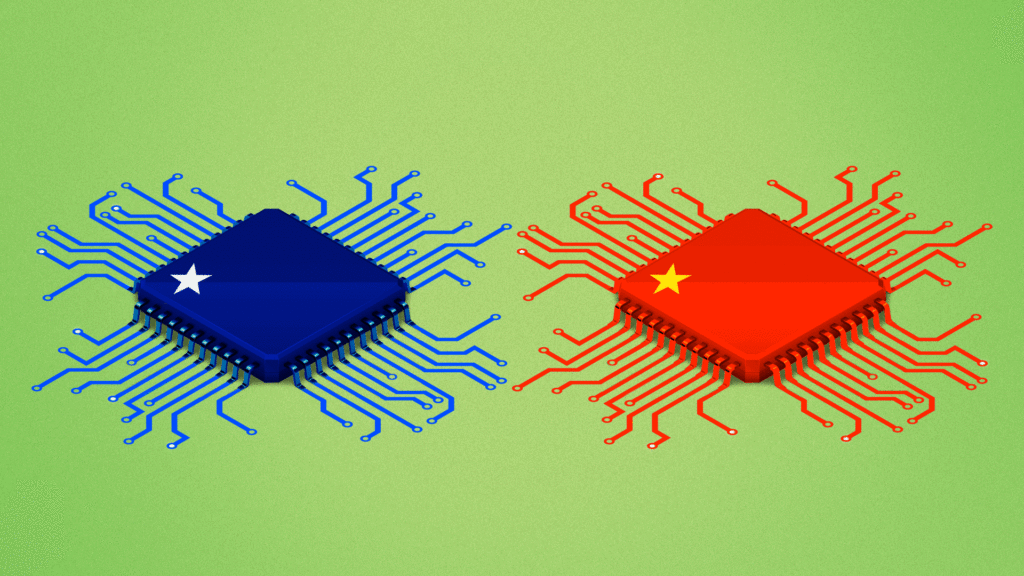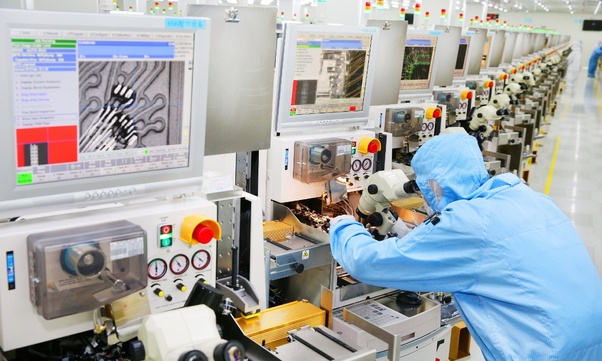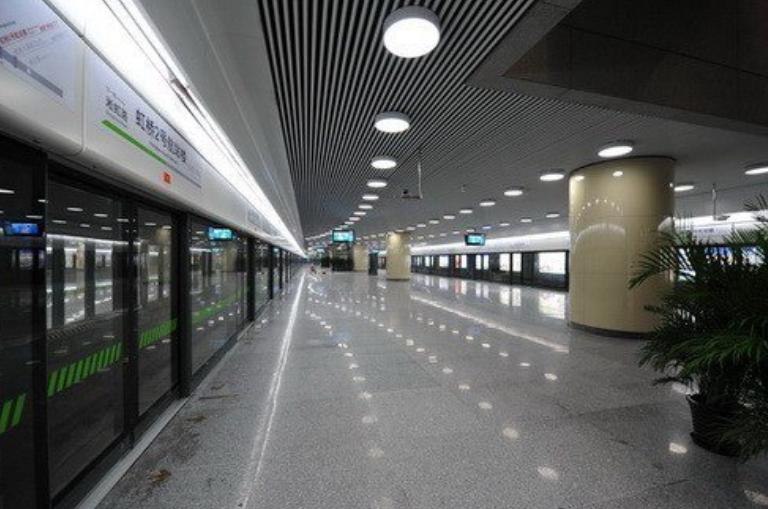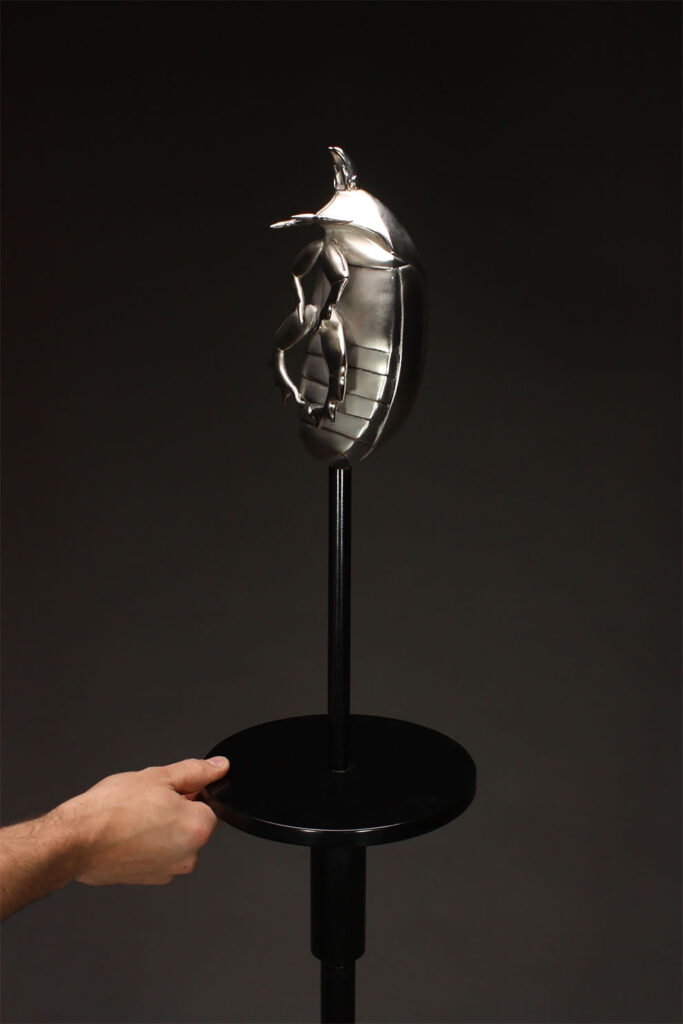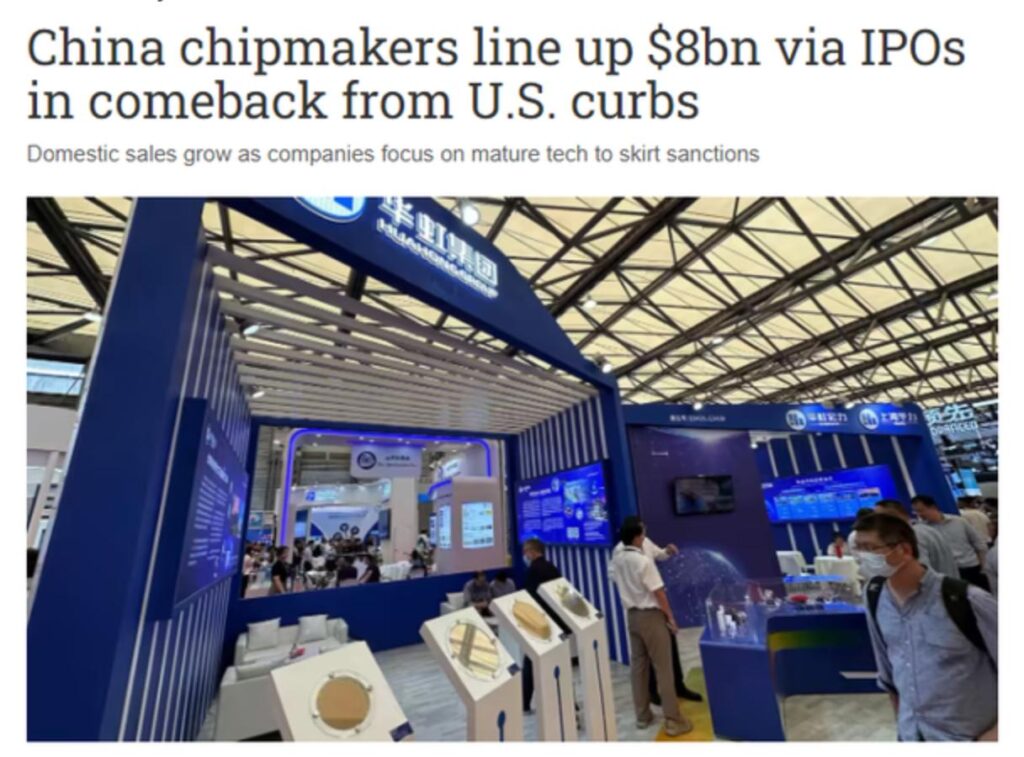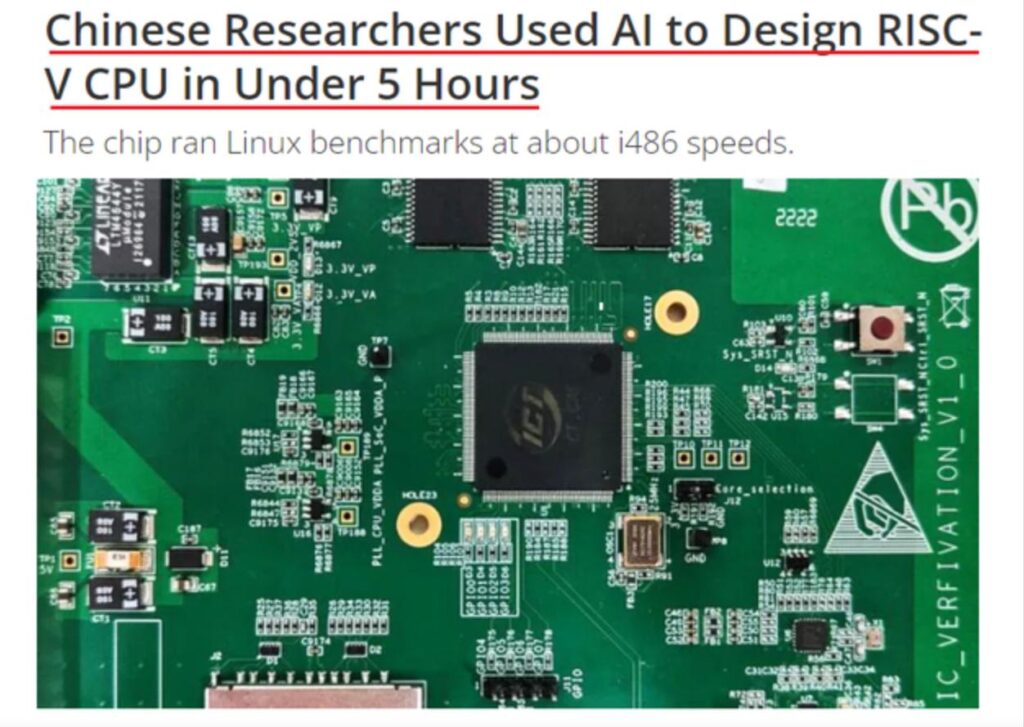Today, I woke up to discover that Paul Rubens died. He was the fellow that played Pee Wee Herman. He was 70 years old.
He died of cancer.
"Last night we said farewell to Paul Reubens, an iconic American actor, comedian, writer and producer whose beloved character Pee-wee Herman delighted generations of children and adults with his positivity, whimsy and belief in the importance of kindness," according to a statement posted to his Facebook.

"Paul bravely and privately fought cancer for years with his trademark tenacity and wit. A gifted and prolific talent, he will forever live in the comedy pantheon and in our hearts as a treasured friend and man of remarkable character and generosity of spirit."
“Please accept my apology for not going public with what I’ve been facing the last six years,” he wrote. “I have always felt a huge amount of love and respect from my friends, fans and supporters. I have loved you all so much and enjoyed making art for you.”
Whatever you might think of him, he was an iconic reminder of my early days in MAJ training in Ridgecrest, California. It was there, shortly after I was “recovered” and started my training that I watched my first Pee Wee Herman skit. There in the hot high desert.
You know, 70 years old is youngish, and he must have been diagnosed with cancer when he hit 64. Sigh. Scares me.
We all gotta go when it is our time.
But as I get older, those that I grew up with; friends, loved ones, pets and celebrities fall to the wayside, and are replaced by others. Others, not as worthy, and others that don’t seem to have the depth that the iconoclasts had.
Philadelphia Pepper Pot

Ingredients
- 1/2 pound honeycomb tripe
- 6 cups chicken stock*
- 4 slices bacon, cut into small pieces
- 1/2 cup onion, chopped
- 1/2 cup celery, chopped
- 1 green bell pepper, chopped
- 1 small bay leaf
- 1 teaspoon peppercorns, finely ground
- 2 tablespoons parsley, minced
- 2 teaspoons salt
- 1 cup diced raw potato
- 2 tablespoons melted butter or margarine
- 2 tablespoons all-purpose flour
- 1/2 cup heavy cream
Instructions
- Cook tripe, rinse and cut into 1/4-inch cubes. Place in large kettle and add chicken stock.
- Fry bacon until crisp and sauté the onion, celery and green pepper in the bacon drippings. Add to tripe and chicken stock. To this mixture add the bay leaf, peppercorns, parsley and salt. Cover, and when mixture comes to the boiling point, add diced raw potato. Cover and simmer gently for about 1 hour.
- Blend melted butter or margarine with flour and stir into hot soup mixture. Season with additional salt if necessary.
- Just before serving, stir in the heavy cream.
- Serve piping hot.
Serves 6 as a main dish.
* Or use 12 chicken bouillon cubes and 6 cups water, or 6 teaspoons chicken concentrate with 6 cups water.
From Gonzalo Lira – Out of Prison – Escaping .
World Hal Turner 31 July 2023

Gonzalo Lira is alive and he said this today:
Right now, I’m about to try to get out of Ukraine, and seek political asylum in Hungary.
Either I’ll cross the border and make it to safety, or I’ll be disappeared by the Kiev regime.
This is what’s happened to me over the past three months.
On May 1, I was arrested for my YouTube videos. The photos of my arrest are pretty funny—morning bed-head made me look like a character out of Dr. Seuss.
My crime was making videos critical of the West and their proxy regime in Kiev—and how they are destroying Ukraine.
Attached to these tweets is the full indictment against me, both the original Ukrainian and English translation.
As you can see, even the prosecutor admits I committed no crime against property or any person. And I certainly provided no aid or intelligence to the Russians.
My indictment explicitly states that all I did was discuss publicly known facts about the war—the epitome of free speech in a democracy.
But Zelensky’s Ukraine is no democracy—it is a thieving, corrupt, murderous gangster regime PRETENDING to be a polite “western” democracy.
Once arrested, I was given documentation assuring me that I was “guaranteed the right” to contact my lawyers and loved ones, as well as post bail.
In fact, I was blocked from calling anyone—even my lawyers. And I was not permitted to post bail—though I had the cash to do so.
In other words, the formalities were carried out scrupulously—while judicial and ethical grotesqueries ruled.
That’s Zelensky’s Ukraine. That’s what his thuggish regime cares about: The >perception< of democracy and the rule of law, so as to mask the sordid, corrupt reality.
That’s why they relentlessly persecute anyone who tells the truth about this war. I’m not the only so-called “propagandist” the Kiev regime has thrown in prison.
It’s also why they shoot any AFU soldier who dares retreat. That’s why the AFU losses are so horrific—but hidden.
As you can see by the indictment, the video I made that really chapped their ass was “Ukraine: A Primer”, which gives the historical background to the conflict—where I state outright that this invasion wasn’t out of the blue. That indeed, it was provoked by the Kiev regime.
Once inside Sizo Prison, I was tortured in two of the four cells I was in—by the other prisoners. Guards NEVER beat prisoners—they outsource torture to the other prisoners.
One prisoner actually apologized to me, telling me he had no choice. He wasn’t lying. I understood.
I got a cracked rib in my first cell, but it wasn’t too bad. The worst stretch was in my fourth cell.
From 1pm on June 21 until 7pm the next day—30 hours—I was beaten and sleep deprived, my arms twisted the wrong way around at the shoulders, and generally beaten pretty bad.
I’ve taken a beating in my time. So sure, it hurt like hell, but it was manageable—but then at one point, two thugs held my head and used a toothpick to scratch the whites of my left eye, while asking me if I could still read if I had just one.
Near the end of this session, one of the thugs struck me in the chest so hard and so repetitively that the beating left a yellow-and-green splotch dead-center on my sternum.
He was >berated< by the cell boss, because he’d left a mark on me—which was a no-no.
Then as luck would have it, two days later—when the bruising was in full bloom—a senior guard came to give me a wellness check!
This was likely because of the Chilean embassy efforts.
The US embassy called me three times, but gave me nothing but “support”—empty bromides.
The guard told me to remove my shirt so he could look me over. The bruising was really spectacular—but he just nodded and pretended he didn’t see a thing.
>Perceptions< He’d checked me, right?
Why was I beaten to the point of torture? Well—it wasn’t over my YouTube videos!
I was imprisoned because of my videos—no doubt. The videos are why the SBU arrested me and put me in Sizo Prison without bail.
I was imprisoned because of my videos—no doubt. The videos are why the SBU arrested me and put me in Sizo Prison without bail.
But as they investigated me—and examined my computers and accounts, all of which they confiscated and opened—the SBU realized that I’m not poor.
So once they had me imprisoned for my videos, the SBU took the opportunity to extort money from me—using the guards as accomplices, who in turn used the prisoners as the muscle.
How I discovered this is too complicated for a Twitter thread. But I’m writing a book about it.
All told, they extorted USD$70,000 out of me, and split it among themselves. They also took another $9k when they arrested me (my emergency cash). And another 11 grand, which was the bail money.
With the computers, iPhone, etc., I’m out an even 100k on this adventure.
I’m never seeing any of that back, not even the bail money—because I’ve decided to leave Ukraine before my trial.
My trial is on Wednesday August 2—and I’ve already been told: I WILL be found guilty.
My sentence will be five to eight years in a prison labor camp.
Yeah.
But here’s the thing: The conditions of my bail are that I have to wear an electronic monitor, surrender my passports, and not leave the city of Kharkov, much less the country.
HOWEVER—after posting bail, I >didn’t< get an ankle monitor—and they >returned< my passports.
Later at the SBU offices, they >returned other documents< they’d confiscated—my driver’s license and my motorcycle registration.
In Sizo, I told an inmate how last year I’d been detained, released, but told not to leave Ukraine. He laughed. “They were telling you to leave!”
This time, it looks like the same is happening: They’re telling me not to leave—but leaving the door open.
Or so I hope.
Or maybe I’m being set up by them so they can justify putting me away in a labor camp—so no one will ever know about their sordid extortion scheme.
I simply don’t know. So I decided to die trying.
I rode my motorcycle across Ukraine—1,400 kms in two days.
I’m going to Hungary to ask for political asylum.
When I fail to show up in court in Kharkov, an arrest warrant will be issued, likely an international warrant.
No doubt other EU countries will comply like sheep, returning me to serve five to eight years in a prison labor camp—
—regardless of the fact that Kiev arrested and imprisoned me for >YouTube videos!<
For free speech!
What happened to “European democratic values?
lol
And the US State Department would return me too. I’m not a black lesbian druggie, or a transgender grifter. Besides, Victoria Nuland hates my guts, or so I’m told.
I’m hoping the Hungarians will read my indictment and say, “This is bullshit—we’re not sending him back.”
I’m posting this thread just as I’m getting to the border checkpoint. I’m also posting videos on the two channels I have access to, The Roundtable and Gonzalo Lira—Again.
If you don’t hear from me in the next 12 hours—whelp! I’m on my way to a labor camp!
Wish me luck.
During your time in the military, did you ever see something that made you say, “you can’t be serious…”?
During your time in the military, did you ever see something that made you say, “you can’t be serious…”?
Too many times to count. Some days passed without me asking that question, but not many.
I was an officer but I lived on base in officer’s apartments. One Sunday I went to town intending to stay the entire day, but I had to come back for some reason.
Upon my return, I could not find the officer on duty, nor his XO.
In the “Piazza D’armi” (the big square in the middle) there was a bridge tank, sans the bridge on it, doing donuts and fish-tailing all over the place.
Mind you, this was a big German tank, not a M113 or something that size. This thing is a land ship. Looks something like this:

Anyhow, the guys doing maintenance on it were taking it for a joyride taking advantage of the absence of the officer on duty for reasons too complicated to explain here.
I sat there dumbfounded at the sight. I had seen people use the washing ramp to launch 4×4 into the air, I had seen M113 roll over. But I had never seen a tank being driven like Tokyo Drift (30 years before the trend).
I didn’t know what to do. The place was deserted and I wasn’t about to go anywhere near this thing.
Then they lost control.
The tank took out the entire corner of our infirmary, which was empty at the time, fortunately, and they had barely noticed. This was a 1800-something building made of stone, concrete and masonry, not a quonset hut or anything like that. The way they used to built things, yet the tank took out a huge bite out of it.
Following that they disappeared behind another building leaving a scene out of Mosul after the ISIS retreat (also 30 years in the future).
I still couldn’t find the officer in charge, but at that point I was running some mind calculus about whose ass was going to be in a sling for that little mishap, so I decided that whatever I had come back for wasn’t worth it and I left.
The next day there was a shit-storm of epic proportions with officers, non-coms and soldiers in the brig or otherwise disciplined.
I still don’t know exactly what happened (or which of the 75 different version to believe) but since I had signed out in the morning and officially returned late that night, I was never questioned.
关于芯片战争的二三事 A few things about the Chip War
By Boss Dai
Today, we are presenting an interesting article on China-US tech rivalry, because in our eyes it reflects how many of the Chinese elite look at the US technology ban on China. These are the main ideas of the article:
- One important consequence of the US embargo is that it helps create a huge market demand for China’s semiconductor industry, so the market mechanism replaces government subsidies as the main driving force.
- Building a domestic semiconductor industry is hard, and will take very long time, but China is no stranger to this type of development. It’s only a matter of when and how fast.
- However, the revolution in artificial intelligence adds a new variable to the game, something China must seize on as quickly as possible (you may read here on how Chinese government is responding with the final version of AIGC regulation).
The original article is written by Boss Dai 戴老板, a famous technology and business influencer in China. Our translation is not reviewed by the author.
…
Recently, Janet Yellen visited China with reportedly many “tasks” to accomplish. Foreign media summarized one of her tasks as “convincing Chinese officials that the series of measures taken by the US to prevent China from accessing sensitive technologies such as semiconductors in the name of national security is not intended to harm the Chinese economy.”
It is already 2023, and the US has launched more than ten rounds of bans on China’s chip industry. The number of mainland enterprises and individuals on the entity list has exceeded 2,000. It is heartwarming that they can still come up with such a noble reason.
It is estimated that even the Americans cannot stand it anymore. This statement was soon refuted by another article on the New York Times.
Four days after Yellen left China, Alex Palmer, a well-known China reporter for foreign media, published an article in the NYT that explained the essence of the US chip blockade in the title: “This is an Act of War.”
Alex Palmer graduated from Harvard and was among the first Yenching Scholar at Peking University. He has been reporting on China for a long time, covering topics such as Xu Xiang, fentanyl, and TikTok. He is a familiar figure who has been “hurting the feelings of the Chinese people”. However, in the matter of chip technology, he managed to extract the truth from the Americans.
In the article, one interviewee bluntly stated, “Not only will we not allow China to make any technological progress, but we will also actively reverse their current technological level.” The chip ban is essentially aimed at eradicating China’s entire advanced technology ecosystem.
The Americans used the word “eradicate,” which carries the meanings of “exterminate” and “uproot,” often associated with diseases like smallpox or Mexican drug cartels. Now, this word is being used to describe China’s high-tech industry. The author predicts in the article that if these measures succeed, it could impact the progress of an entire generation in China.
Anyone who wants to understand the severity of this war only needs to repeatedly ponder the word “eradicate.”
An upgraded war
The rules of competition and the rules of war are two completely different things. Business competition is a contest under legal framework, but war is different. The opponent will almost never consider any rules or restrictions and will do whatever it takes to achieve their strategic objectives. Especially in the chip industry, the United States can even keep changing the rules – as soon as you adapt to one set, it will immediately switch to a new one to deal with you.
For example, in 2018, the US Department of Commerce sanctioned Fujian Jinhua by using the “Entity List,” directly leading to the latter’s shutdown (which has since resumed operations); after this kind of small success, [The US Government] also included Huawei in the Entity List in 2019, restricting US companies from providing products and services to it, such as EDA software and Google’s GMS.
After discovering that these methods were not enough to completely “eradicate” Huawei, the US changed the rules: starting in May 2020, all companies using US technology could not supply Huawei, such as TSMC’s foundry. This directly led to the stagnation of HiSilicon and the significant decline of Huawei’s smartphones, bringing more than 100 billion yuan in losses to the Chinese industrial chain every year.
Afterward, the Biden administration escalated its targets from “companies” to “industries,” and a large number of Chinese companies, universities, and research institutions were subsequently included in the ban list. On October 7, 2022, the Bureau of Industry and Security (BIS) of the U.S. Department of Commerce issued new export control regulations, effectively imposing a “ceiling” on Chinese semiconductors. Logic chips below 16nm or 14nm, NAND storage with 128 layers or more, and integrated circuits (DRAM) below 18nm are restricted from export. Additionally, computing chips with a performance exceeding 4800 TOPS and interconnection bandwidth exceeding 600GB/s are also restricted from supply, whether through manufacturing or direct sales.
Using the words of a Washington think tank: Trump targeted companies, while Biden is targeting industries.
When reading the novel “The Three-Body Problem,” ordinary readers can easily understand the plot of the Trisolarans to lock down Earth’s technology [Baiguan note: This novel is a widely-read and widely-cited Chinese sci-fi series, in which the aliens, called the Trisolorans, used a super technology to keep a lid on basic science research on Earth]. However, in real life, many non-industry individuals tend to have a certain perception when observing the chip ban: as long as you comply with U.S. rules, you won’t be targeted; if you are targeted, it means you did something wrong.
Having such a perception is normal because many people’s thinking is still within the framework of “competition.” However, in a “war”, this perception may be just an illusion. In recent years, many semiconductor executives have expressed that when a company ventures into advanced fields in R&D (even just in preliminary research), they will encounter an invisible barrier.
The development of high-end chips is based on a global technology supply chain. For example, to make a 5nm SoC chip, one needs to license from ARM, software from Cadence or Synopsys, patents from Qualcomm, and coordinate production capacity with TSMC. By doing these actions, one will come under the purview of the BIS’s regulations.
A case in point is a chip company under a certain smartphone manufacturer, which set up a R&D subsidiary in Taiwan to attract local talent for consumer-grade chips. However, it soon encountered an “investigation” by relevant Taiwanese authorities. Helpless, this subsidiary was separated from its parent company and became an independent supplier, but still had to proceed with caution.
In the end, after a raid and seizure of servers by Taiwanese “inspecting authorities” (where no violations were found), this Taiwanese subsidiary was forced to shut down. A few months later, its parent company voluntarily dissolved as well – senior management realized that under constantly changing restrictions, any high-end chip project carried the risk of being “reset with a single button”.
[redacted]This ability to “reset with a single button” essentially turns the previously practiced “global division of labor based on free trade” into a weapon for attacking enemies. To whitewash this behavior, American scholars have even coined a term: weaponized interdependence.
Once these facts are clear, many previously disputed matters no longer need to be discussed. For example, it is pointless to mock Huawei for violating the Iran sanctions because they have already stated clearly that “Iran is just an excuse.” Likewise, criticizing China’s industrial policies seems ridiculous, as the US promptly allocated $53 billion to subsidize chip manufacturing and promote re-shoring.
As Carl von Clausewitz once said, “War is the continuation of politics.” The same can be said for the Chip War.
How the blockade can backfire
Some may ask: Is there really no way to respond to the US’s “all-out war”?
If you’re looking for a miraculous move that can defeat the enemy in one stroke, there really isn’t one. Computer technology itself, including the integrated circuit industry, was born in the US. By using war tactics to exert dominance over the industrial chain, China can only take longer to conquer the upstream and downstream bit by bit. This is a long process.
However, if one is to think this “war behavior” doesn’t have any side effects and can be used continuously, it is not true. The biggest side effect of this all-industry blockade by the United States is that it has given China the opportunity to rely on market mechanisms – rather than pure planning power – to solve the problem of “卡脖子 technology stranglehold”.
This sentence may seem difficult to understand at first. We can first understand what “pure planning power” means. For example, in the semiconductor industry, there is a project that specifically supports major technological breakthroughs called the “Manufacturing Technology and Complete Set of Processes for Ultra-Large-Scale Integrated Circuits,” commonly known as the “02 Special Project”, which is funded purely by government finances.
Many companies have received funding from the 02 Special Project. When I was researching semiconductor companies, I saw many prototypes left over from this project. After seeing them, I had mixed feelings. Although the 02 Special Project provided valuable funding for companies during the economic downturn, the efficiency of using these funds was not high. Even if the funds were given to the companies in the form of subsidies, it was difficult to produce technologies and products that could enter the market. People who have done scientific research probably understand this.
Before the chip war, China had many struggling equipment, material, and small chip companies that were difficult to compete with foreign counterparts. Companies like SMIC, JCET, and even Huawei did not pay much attention to them because they could buy more mature and cost-effective foreign products. However, the US blockade of the Chinese chip industry has brought a rare opportunity for these companies.
Under the blockade, domestic companies that were previously ignored by wafer fabs or test and packaging factories were pushed to the forefront. A large number of equipment and materials were sent to production lines for validation. Domestic small factories suddenly saw hope, and no one dared to waste this precious opportunity. Therefore, they burnt the midnight oil to improve their products.
Although this is a forced market mechanism, an internal circulation market mechanism, its efficiency is much higher than pure planning: one party is determined to replace imports, while the other is desperately holding onto a lifeline. Under the inspirations of wealth creation effects of the Shanghai STAR Board, almost every vertical segment of the semiconductor upstream has many companies involved.
I asked my colleagues to compile the profit trends of Chinese semiconductor listed companies over the past decade (only selecting companies with ten years of continuous performance). There is an obvious growth trend: ten years ago, the total profits of these domestic companies was only more than 3 billion, and by 2022, their total profits exceeded 33.4 billion, nearly ten times that of ten years ago.
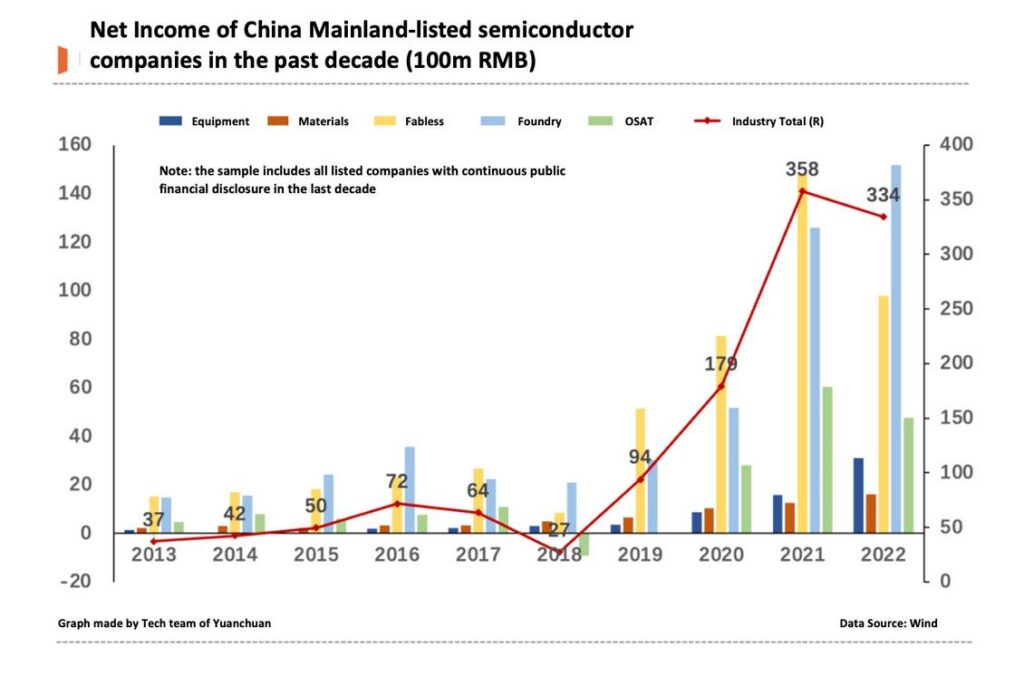
Alex Palmer commented in his article: When Chinese companies can access Western chip suppliers, domestic manufacturers do not have much business. But now, if Chinese companies do not unite, the outcome will be collective destruction. “Previously, they could choose between national resilience and business development, but now this choice no longer exists.”
Of course, some people may question: “These domestic alternatives are all in the mid-to-low-end field. We still cannot break through in the high-end chip market.” This questioning is not unfounded from a factual perspective. However, chips are not like the internet, where a few programmers can come up with something in a few months. It is an industry that requires years of investment and development, and it cannot be rushed.
In the past decade, the domestic semiconductor industry has made significant progress. However, public opinion often has a tendency to focus on lithography, to the extent that the belief “if China cannot produce EUV lithography machines, its semiconductor industry is not capable” has become very popular. This viewpoint is neither objective nor correct, and it obscures the efforts and hard work of many people, but it is widely embraced.
Of course, the success of an industry ultimately depends on whether it possesses the necessary conditions for success, such as funding, talent, and market. This is not greatly influenced by public opinion. Moreover, many extremely pessimistic remarks have appeared not only recently, but also many years ago in fields such as high-speed rail, wind power, solar power, and new energy vehicles.
Greater challenges
It may be fate, or it may be a coincidence, but at a time when the Chip War is in full swing, the fourth industrial revolution driven by AI has begun.
At the end of 2022, the roar of OpenAI brought a new world to carbon-based humans, and also made the Chip War part of a wider confrontation. In fact, the United States has already restricted Chinese technology companies from accessing the latest AI chips, and plans to prohibit American capital from investing in Chinese artificial intelligence companies, according to reports.
As we all know, the early stage of the industrial revolution (initiation stage) is a period of emerging new technologies, dazzling new models, and emerging new giants. If we cannot keep up with the changes in core technologies at this time, the gap later on may become increasingly wider. A small mistake can lead to a big loss, and it will take more time and money to catch up later on.
During the initiation stage of the first industrial revolution (steam engine), China adopted a closed-door policy; during the initiation of the second industrial revolution (electricity), China was in a turbulent period at the end of the Qing Dynasty; and during the initiation of the third industrial revolution (computers), although new China was catching up synchronously, the progress was greatly affected by political movements.
Therefore, every footnote in history tells us: we cannot fall behind this time.
Fortunately, China still has some foundation in the field of AI. Since 2012, internet giants and startups have been continuously pouring into the AI field. Although it was the Americans who discovered the new continent, looking around the world, China seems to be the only country closely following behind, and there is no need to underestimate ourselves.
However, there are also many unfavorable factors. Firstly, the methodology used by the US in the Chip War will definitely be extended to the field of artificial intelligence. However, unlike the global division of labor and the ultra-long industrial chain in semiconductors, most of the fields in artificial intelligence are innovative at the software level, and the chain is relatively short, with a lower (but not zero) probability of being strangleheld than semiconductors.
Secondly, venture capital funds are in short supply. Due to the influence of geopolitics and [the slump in] Chinese ADRs, it is an open secret that US dollar funds cannot be raised. The RMB market is greatly affected by local finances. Therefore, the current AI entrepreneurship wave in China is far smaller than the mobile Internet wave ten years ago, and it is also far smaller than the currently thriving scene in Silicon Valley.
In terms of basic innovation, there is still a relatively large gap in China. The Bell Labs, which invented the transistor, and OpenAI, which launched GPT, are essentially “raised” by large companies (the former is AT&T, and the latter is Microsoft). China currently lacks such roles (government-funded Beijing Academy of Artificial Intelligence and Shanghai AI Lab are potential candidates).
If we cannot keep up with innovation, there will be an awkward situation of “if you dare to open source, I dare to innovate”. [Baiguan note: this is a piece of satire on the phenomenon that a lot of innovation in China is based on open-source technology in other parts of the world.]
In the years leading up to the outbreak of a new technological revolution, countries that actively embrace it are likely to create a “generational gap” with their rivals. For example, the British invented tanks in 1915, but Germany was the first to form an armored army centered around tanks, with combat power far surpassing that of other surrounding countries. After that, they swept almost the entire European continent with lightning warfare.
Cooperation between the US military and technology departments has always been smooth – the Minuteman Intercontinental Missile was once the earliest major customer of integrated circuits, digesting 20% of shipments. And US defense suppliers such as Palantir and Ghost Robotics have already launched military products that incorporate the latest AI technology earlier this year.
Mao Zedong once said: “The Anti-Japanese War cannot be rushed, but the Liberation War cannot be delayed.” The same saying may apply to the current situation: “The Chip War cannot be rushed, but the War of AI cannot be delayed.”
In 1900, global steel production was 28 million tons, and oil production was 20 million tons. By 2022, these two numbers have become 1.88 billion tons and 204 million tons respectively – steel and oil are undoubtedly the basic raw materials for constructing human industrial civilization for more than a century. In the 21st century, however, silicon is the new steel and oil.
Before Pearl Harbor, the focus of the US embargo was on steel and oil, which were the foundations for military victory due to their strong metallurgical and refining capabilities. After the failure of the Moscow campaign, Germany fought desperately to advance towards the Caucasus, just to seize the Baku oil field – each era has its own strategic resources, and losing them is tantamount to failure.
We are at an unprecedented intersection of the industrial revolution and the great power game. Respect the law, maintain awe, and be full of confidence, and dawn will surely come.
Our Take
We agree with Boss Dai that, when looking at China’s semiconductor industry, the right assumption to make is not that the US ban will slow down its development. Rather, the ban might actually help create conditions for growth that wouldn’t become possible if Chinese end-users still had access to more competitive foreign chips and equipment.
In the end, when it comes to high-end chip-making, there is no theoretical barrier barring China. It is not as if there are some fundamental law of physics and chemistry that Chinese engineers do not know. The main obstacle is accumulation of technical know-how, which in turn requires sustained support of large amount of patient capital, something that is not possible till now.
Who was the craziest leader in history?

Albania’s first and only king managed to survive dozens of assassination attempts and hundreds of blood feuds. In traditional Albanian culture Blood Feud is the social obligation to kill an offender or a member of their family in order to salvage one’s honour.
King Zog 1st, of Albania, reined from 1928 to 1939, and had his first brush with death in 1923, when he was Prime Minister of the Albanian government. After refusing to step down after an election he was shot twice in the chest in the Albanian Parliament building.
Zog was an authoritarian and made enemies in almost all political groups in Albania, communist, Democrats, landholders, and fascist, alike.
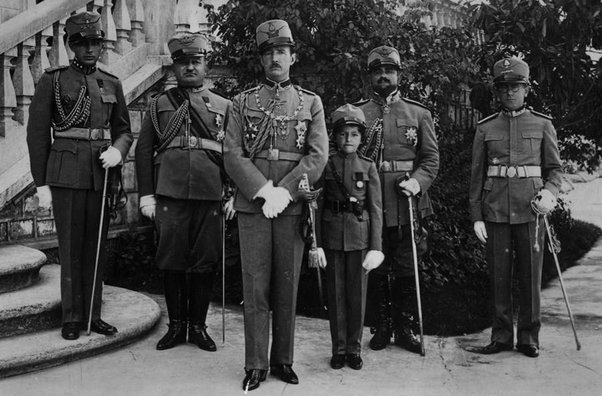
In 1932, one of King Zog’s bodyguards was shot in the back of the head three times after been mistaken for the King. Zog apparently drew his pistol and fired back.
Zog became so terrified of being poisoned that he made his mother monitor the royal kitchens. Allegedly Zog was the target of over 600 blood feuds. Despite this Zog managed to survive all the assassination attempts on his life, although is was his strained relationship with fascist Italy that eventually spelled the end of his rein.
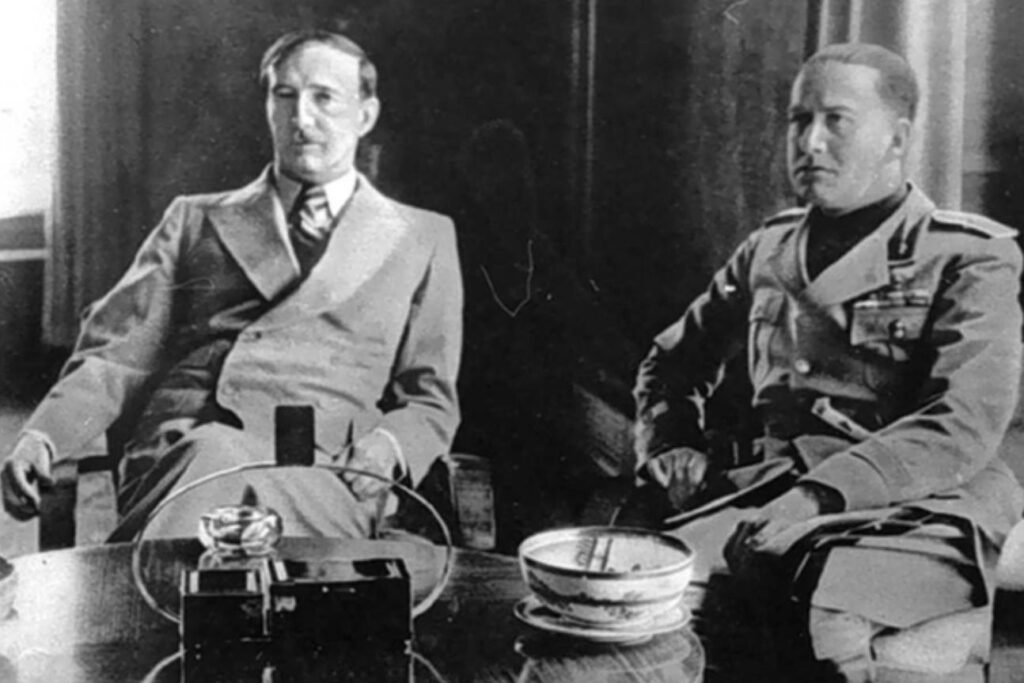
While Zog utilized Mussolini’s Italy for occasional support, Italian influence grew to great in the aftermath of the great depression. Zog’s attempt to curb Italian control and seek other European allies, led the Italians to invade in 1939.
Taking his family and a great deal of gold with him Zog fled Albania never to return. He died in 1961, due his habit of smoking 200 cigarettes a day.
If Americans are overweight, why do they not walk and ride a bike instead of driving a car?
Because it’s too dangerous.
The vast majority of roads and streets in the United States are built to move cars as quickly as possible without regard for the safety of pedestrians and cyclists. They’re wide, fast, have no obstacles anywhere near the road, are built for cars to get in and out of massive parking lots without having to slow down and often don’t have sidewalks, let alone protected bike lanes.
Since commercial uses are often concentrated on wide fast roads, you should try to make them easy for pedestrians to cross, but they aren’t. Signaled cross walks are often hundreds of yards apart and pedestrians often have to dodge turning vehicles.
It hardly matters how easy you make crossing the street though because the chances of anything being within walking or cycling distance of your house are next to nothing. It isn’t uncommon for the closest store, restaurant or park to be several kilometers away over residential streets that don’t go in straight lines.
You wake up in the morning with $100K dollars in debt, what’s the first thing you do?
You wake up in the morning with $100K dollars in debt, whats the first thing you do?
I’d be thrilled that most of my debt got paid off overnight somehow. I might even take a day off of work to celebrate.
If we’re including mortgages, I’d bet that a lot of Americans my age are more than $100k in debt.
Even if we’re not including mortgages, but just student loans, car loans, credit cards, and back taxes, I’ll bet a lot of Americans my age would be thrilled to owe just $100k.
I’ve owed considerably more than that for most of my adult life. You get used to it. Once you accept that debt is like taxes… just a fact of life for most people… you learn not to let it bother you so much, and just do what you were going to do anyway.
I could probably take summer jobs over the next ten years and pay off my mortgage a year or two earlier, but I feel like I’d just find myself sitting in my paid-off house wishing that I’d spent more time with my children when they were younger. I know my father felt that way late in his life. He worked all of the overtime he could when my sister and I were children. During my visits to him when I was in my 20s and he was retired, we both lamented the fact that he “missed much of my childhood,” and warned me against doing the same with my kids.
The Unspeakable Things Genghis Khan Did To His Enemies
Bolivia becomes third South American nation to use Chinese yuan for trade settlement amid global de-dollarization wave
Amid an accelerating wave of de-dollarization across the world, Bolivia has become the third South American nation to use Chinese yuan for trade settlement, and the Bolivian government is pushing for the opening of Chinese banks in the country as soon as possible, according to media reports.
Bolivian Economy Minister Marcelo Montenegro told a press conference that the country is already using the yuan and “it’s a reality and a good start,” the Times Magazine reported on Friday.
“Banana, zinc, and wood manufacturing exporters are conducting transactions in yuan, as well as importers of vehicles and capital goods,” Montenegro said.
Bolivia conducted financial operations amounting to 278 million Chinese yuan ($38.7 million) from May to July, which accounts for 10 percent of Bolivia’s foreign trade during the period, according to Montenegro.
Prior to Bolivia, Argentina and Brazil had already initiated the use of yuan in their trading settlements. Argentina in April announced plans to use Chinese currency yuan to pay for goods imported from China; while Brazil in February signed a memorandum of cooperation with China to establish yuan clearing arrangements in Brazil.
Argentina’s central bank’s enabling of Chinese yuan accounts in the Argentine banking system is a great advancement in reducing exchange rate costs, promoting financial efficiency and currency diversification, Argentine Ambassador to China Sabino Vaca Narvaja told the Global Times in an exclusive written interview
in June.
“More and more countries have turned to Chinese yuan for trade settlement, and this phenomenon will become increasingly common,” Xi Junyang, a professor at the Shanghai University of Finance and Economics, told the Global Times on Saturday.
China has been the world’s largest trading country which will generate huge demand for yuan settlement. The nation has been expanding the opening-up of its financial activities and the exchange rates of the Chinese yuan have been relatively stable compared to other major currencies, Xi said.
In the meantime, a growing number of countries have realized the significance of seeking a more diversified international monetary system as the US continues to weaponize its currency, especially after the Ukraine crisis, Xi noted.
Chinese experts said under the US Fed’s aggressive interest rate hiking cycle, many developing countries have been facing mounting pressure from capital outflows, currency depreciation and the rising costs of servicing debt.
Bolivia has experienced dollar shortages since February which has severely affected the country’s economy, according to media reports.
During a meeting with the Chinese ambassador to Bolivia Huang Yazhong on July 20, the Governor of Bolivian central bank, Edwin Rojas Ulo, said that the financial sector is an integral part of China-Bolivia’s collaboration in promoting the Belt and Road Initiative, per a statement published by the Chinese Embassy in Bolivia.
Bolivia’s central bank will continue to maintain strong cooperation with Chinese financial institutions to foster healthy development in trade and investment between the two countries, the governor said.
China is Bolivia’s second-largest trading partner and its primary source of imports. Bilateral cooperation between China and Bolivia encompasses various sectors, including infrastructure, aerospace, information technology, and oil and gas development, reports said.
In the first half of the year, bilateral trade between China and Bolivia totaled 8.42 billion yuan, soaring 77.4 percent year-on-year, according to data from China’s General Administration of Customs.
The yuan has become the world’s fifth largest payment currency, the third largest trade finance currency and fifth largest international reserve currency.
Global Times
The Cult – She Sells Sanctuary
What is your opinion on India’s stand on the Russia-Ukraine conflict?

Textbook Perfect!!!!
Thats exactly the Stand to take
Right now – India is sitting on the Fence and leaning towards the Russian Side. Just like Nehru did and INC did for the last 70 years of Indian existence as an Independent country.
As i said earlier- Russia is our biggest defence supplier. We have S-400s coming, we paid for Nuclear Submarines , We have major Ak-203 SA Rifles on the way. We have major Engine Components from Russia due, We have a lot of Tank Components from Russia, We have 42 Chopper Due from Russia – $ 26 Billion worth of Orders of which we have paid around $ 2.6 Billion plus placed guarantees for a further $ 3.8 Billion plus a further $ 40 Billion of Potential Orders.
We have had 70 years of Friendship with Russia where they have never once stabbed us in the back. Never Once.
On the other hand you have the United States who have done nothing for us except Talk and threaten and hold some stage shows like Howdy Modi or Namaste Trump.
Best example was 2021 – when They refused to let us have 1 gram of Vaccine Raw Materials even though we were QUAD Allies. Not a single gram!! As we begged and begged.
Indias Stand is so far – Perfect
I only hope it continues because the pressure on Jaishankar is enormous.
Every Quad Member apart from India have condemned Russia openly – Aus, Japan and USA
4 out of 6 Countries with Which India is likely to sign FTAs (66%) have condemned Russia. Only India and UAE havent condemned Russia yet.
Lets Hope Jaishankar can hold strong.
I am sure Sushma Swaraj would have but she is gone.
Meatball and Ravioli Soup (T&T)
This soup is very hearty and oh, so delicious!. It is a quick and very easy soup to make. I hope that everyone will give this delicious soup a try.

Ingredients
Soup
- 1 tablespoon olive oil
- 1 large onion finely chopped
- 1 garlic clove minced
- 1 (28 ounce) can chopped tomatoes
- 1/4 cup tomato paste
- 1 (32 ounce) container Swanson chicken broth
- 1 cup water
- 1/2 teaspoon granulated sugar
- 1/2 teaspoon dried basil
- 1/4 teaspoon each dried thyme and oregano
- 12 ounces cheese-filled ravioli (I like to use the mini ravioli)
- 1/4 cup fresh chopped parsley
- Freshly grated parmesan cheese
Meatballs
- 1 egg slightly beaten
- 1/4 cup fresh soft bread crumbs
- 1/4 cup grated parmesan cheese
- 3/4 teaspoons onion salt
- 1 garlic clove minced
- 1 pound ground beef
- Freshly chopped parsley to taste
Instructions
- In a food processor place bread and pulse until you get a medium or almost fine crumb mix. To this add parmesan cheese, onion salt, egg, parsley garlic and ground beef, process until all ingredients are combined. Shape into 1/2- to 1-inch balls.
- In a nonstick 4- to 6-quart soup pot, brown meatballs in heated olive oil until cooked through. Mix in onion and garlic and cook about 5 minutes, being careful not to break up meatballs).
- Add tomatoes and liquid, tomato paste, broth, water, sugar, basil, thyme and oregano. Bring mixture to a boil, reduce heat, cover and simmer 30 minutes. Add ravioli and cook, covered at a gentle boil according to package direction (approximately 10 to 15 minutes), until they are just tender and no longer have a starchy taste. Salt to taste. Stir in parsley and sprinkle with cheese.
(T&T)
This soup is very hearty and oh, so delicious!. It is a quick and very easy soup to make. I hope that everyone will give this delicious soup a try.
Ingredients
Soup
- 1 tablespoon olive oil
- 1 large onion finely chopped
- 1 garlic clove minced
- 1 (28 ounce) can chopped tomatoes
- 1/4 cup tomato paste
- 1 (32 ounce) container Swanson chicken broth
- 1 cup water
- 1/2 teaspoon granulated sugar
- 1/2 teaspoon dried basil
- 1/4 teaspoon each dried thyme and oregano
- 12 ounces cheese-filled ravioli (I like to use the mini ravioli)
- 1/4 cup fresh chopped parsley
- Freshly grated parmesan cheese
Meatballs
- 1 egg slightly beaten
- 1/4 cup fresh soft bread crumbs
- 1/4 cup grated parmesan cheese
- 3/4 teaspoons onion salt
- 1 garlic clove minced
- 1 pound ground beef
- Freshly chopped parsley to taste
Instructions
- In a food processor place bread and pulse until you get a medium or almost fine crumb mix. To this add parmesan cheese, onion salt, egg, parsley garlic and ground beef, process until all ingredients are combined. Shape into 1/2- to 1-inch balls.
- In a nonstick 4- to 6-quart soup pot, brown meatballs in heated olive oil until cooked through. Mix in onion and garlic and cook about 5 minutes, being careful not to break up meatballs).
- Add tomatoes and liquid, tomato paste, broth, water, sugar, basil, thyme and oregano. Bring mixture to a boil, reduce heat, cover and simmer 30 minutes. Add ravioli and cook, covered at a gentle boil according to package direction (approximately 10 to 15 minutes), until they are just tender and no longer have a starchy taste. Salt to taste. Stir in parsley and sprinkle with cheese.
What was the Earth like at the time of the Giant Insects ? | Documentary History of the Earth
If you had walked on the surface of the Earth in the Carboniferous period, it could have happened. When people talk about gigantism, they tend to think of the famous dinosaurs that roamed the Earth during the Jurassic, 150 million years ago. However, dragonflies, millipedes, spiders and even scorpions once reached exceptional sizes. This amazing evolution is due to the constraints imposed by the living environment. But how did insects so small reach such large dimensions? And why did they become extinct?
What is happening to China’s manufacturing market share as labor costs continue to rise?
Let’s see
As of today in 2023 — China’s manufacturing market share globally ROSE by 3.66%
The reason is simple
European Industrial Manufacturing FELL by 15.2% due to the Ukraine War especially Germany where Manufacturing fell by 27% this year
Korea’s Industrial Output also fell by 2.82% this year
Japan’s Manufacturing Output fell by 6.37% this year
India’s Manufacturing Output rose by 8.16% in 2022 but has fallen by 3.39% upto June 30, 2023
Thus China’s Share in Manufacturing or Manufacturing Output has RISEN by 3.66%
In 2023 — Russia is the only Nation whose Industrial Output ROSE by 6.22%
Remember while China’s SHARE rose , it’s Industrial Output reduced by 3.10% in 2023 so far
What’s the saddest thing a new mother said to her doctor?
“I made a bracelet for you!”
She handed me a friendship bracelet she’d made with a little plastic loom. I thanked her and put it on my wrist.
I walked out of her room and saw her nurse, tears in her eyes, wearing one as well.
She should’ve been exchanging friendship bracelets with her friends at school and planning for a sleepover that weekend.
Instead, she was in a hospital bed starting an induction of labor.
She was 14 years old.
Ed Wood Jr | Plan 9 from Outer Space 1957 | Colorized
Todays special treat is the cult classic…



